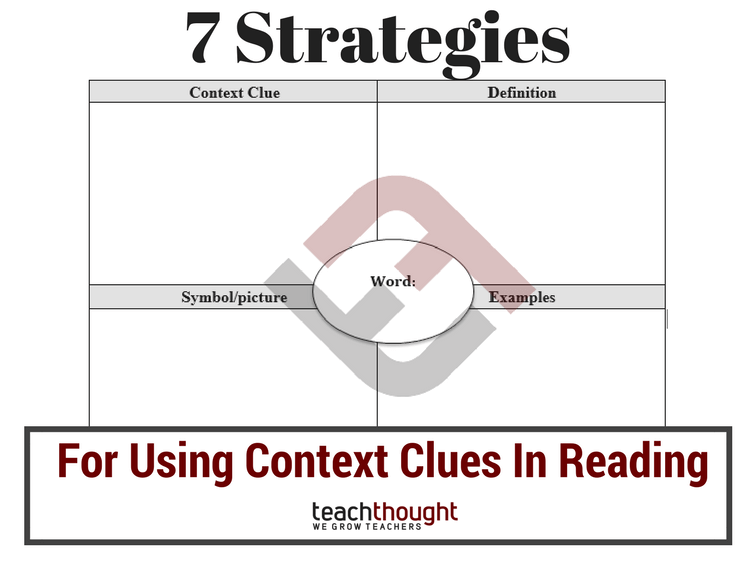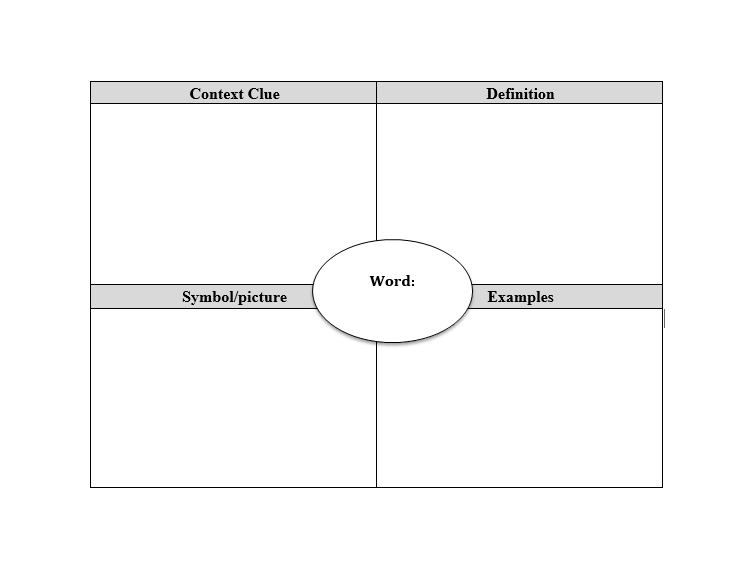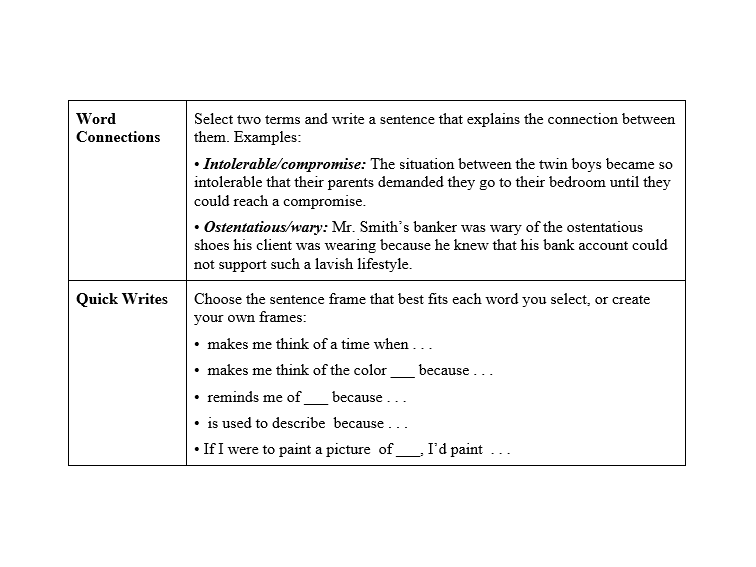
7 Strategies For Using Context Clues In Reading
contributed by Kathy Glass
We often ask students to use context clues to figure out a word’s meaning. That makes it our job as teachers to explicitly teach how authors use them.
In doing so, students gain an inventory of strategies (such as using reading response questions) to unlock the meaning of unfamiliar words and deepen their overall comprehension. Without awareness of the types of context clues, students are at a disadvantage when trying to determine meaning independently.
See also 25 Reading Strategies That Work In Every Content Area
Teaching this skill supports self-agency, allowing students to define unfamiliar words on their own. The following are devices that authors use to incorporate context clues into their writing. The goal isn’t to memorize each type, but to help students understand that authors provide hints in many ways—and readers should be alert to these patterns.
Although the list below seems neat and categorized, remind students to read the entire passage where an unfamiliar word appears. This broader view helps them infer meaning and better understand the surrounding text.
According to research by Beck, McKeown, and Kucan (2002), vocabulary growth depends heavily on students learning to derive word meanings from context—not just memorizing definitions.
7 Strategies For Using Context Clues
1. Word Parts
The idea: Break down the word into parts—base word, prefix, and suffix.
Example: Discrimination
- Dis-: not, opposite of, reverse
- crimin: verdict, judgment
- -tion: indicates a noun
This breakdown provides insight into the word’s overall meaning.
2. Definition or Explanation
The idea: The sentence may contain a direct explanation or definition.
Examples:
- Discrimination, or unfairly targeting a group, can cause distress.
- Vulnerable people are often protected under laws that prevent exploitation.
3. Synonym
The idea: Words near the unfamiliar term might offer a synonym.
Examples:
- Discrimination or bias can cause distress.
- People who are vulnerable or defenseless may avoid harm by staying alert.
4. Example
The idea: Specific examples help clarify the meaning.
Examples:
- Like forcing smokers outside, discrimination targets a perceived undesirable group.
- Vulnerable people, such as children or the elderly, are often protected by law.
5. Antonym or Contrast
The idea: Opposite meanings are often introduced with contrast words like unlike or as opposed to.
Examples:
- Discrimination, as opposed to fairness, can have damaging effects.
- Vulnerable people, unlike those who can protect themselves, are often targets of harm.
6. Analogy
The idea: Comparisons offer clues to word meaning.
Examples:
- Discrimination is like hateful vines wrapping around the heart.
- Vulnerable people are like delicate glass—easily broken, needing care.
7. Appositive
The idea: An appositive renames or defines a noun directly.
Examples:
- Discrimination, the act of showing bias, can cause harm.
- The elderly and handicapped, a vulnerable group, are protected by law.
Figure A: 4-Square Graphic Organizer

Follow-Up: Reinforcing New Vocabulary
After identifying the clue, guide students in internalizing the new word through practice and creative use.
Practice Sentences
Figure B: Short Writing Task Options

Use vocabulary pairs in context:
- Intolerable/compromise: The situation between the twins became so intolerable that their parents insisted they reach a compromise.
- Ostentatious/wary: Mr. Smith’s banker was wary of the ostentatious shoes, knowing his client couldn’t afford such luxury.
Quick Writes
Invite students to reflect on the word with sentence stems:
- ___ reminds me of a time when…
- ___ makes me think of the color ___ because…
- If I were to paint a picture of ___, I’d paint…
Examples and Non-Examples
For the word: Diversity
Examples:
- A school with students from multiple cultures
- A workplace team from varied backgrounds
- A food court featuring global cuisines
Non-Examples:
- An all-women’s school
- A leadership team of one race or gender
- Segregated schools before civil rights reform
Conclusion: Helping Students Help Themselves
Authors don’t always provide context clues—sometimes they assume the reader already knows the word. But when clues are present, equipping students to recognize and use them improves comprehension and supports independent reading growth.
Teaching students how to “read around the word” empowers them to think critically, read deeply, and learn continually.
Adapted from Complex Text Decoded: How to Design Lessons and Use Strategies That Target Authentic Texts by Kathy T. Glass (ASCD, 2015).
Kathy Glass consults nationally with schools and districts, presents at conferences, and teaches seminars for university and county programs delivering customized professional development. A former master teacher, she has been in education for more than 25 years and works with administrators and teachers in groups of varying sizes from kindergarten through high school. She is the author of Complex Text Decoded: How to Design Lessons and Use Strategies That Target Authentic Texts. Connect with Kathy through her website, www.kathyglassconsulting.com.